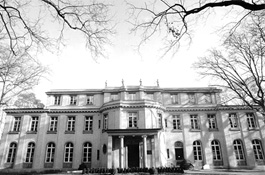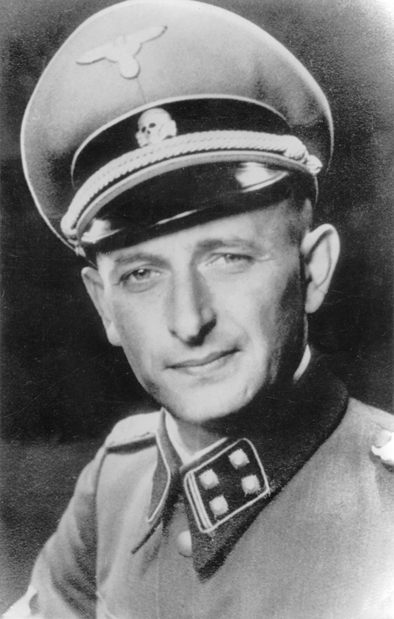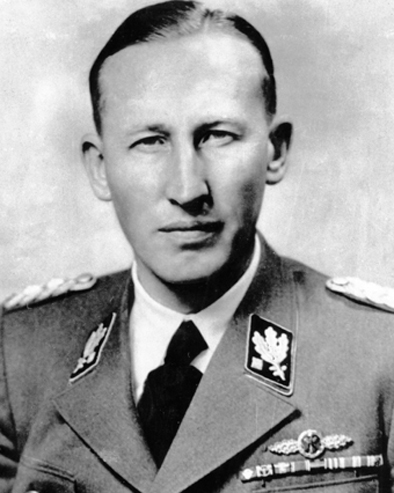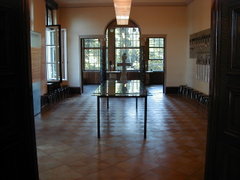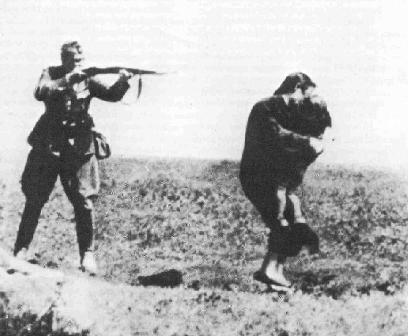Holocaust Education & Archive Research Team |
|
Holocaust Prelude Early Nazi Leaders Nazi Propaganda Nazi Racial Laws Sinti & Roma Kristallnacht The SS SS Leadership Wannsee
Prelude Articles Image Galleries | |||||
The Wannsee Conference
On January 20, 1942, fifteen high-ranking Nazi party and German government leaders gathered for an important meeting. The meeting or conference (as it came to be known), was organized by Adolf Eichmann (SS-SturmbannfŸhrer), at the order of Reinhard Heydrich, Chief of the German State Police and of the SD ("Sicherheitsdienst", "Security Service of the SS").
The conference was held in a suburb of Berlin at a villa by a lake known as Wannsee. The goal of this conference was the debate of the so-called "Final Solution of the Jewish Question". Heydrich wanted to harmonize the organisation and implementation of that "Final Solution" with every office and administrative department that was to participate in it. Fifteen people attended the conference including high ranking party officials and SS- officers from the "Reichssicherheitshauptamt" (RSHA, "Central Security Office of the Reich"), as well as two representatives of the "Ministry of the Occupied Regions in the East", one representative of the Ministry for the Interior, one representative of the "Commissioner of the Four-Year-Plan", one representative of the Ministry for Justice, one representative of the Office of the "General Governor of the occupied Polish Regions", and one representative of the Ministry of Foreign Affairs. Heydrich opened the meeting with the announcement that Hermann Göring, the Commander-in-Chief of the Luftwaffe, President of the Reichstag, Prime Minister of Prussia, and last but not least the designated second in command in the National Socialist hierarchy. Adolf Hitler had granted him an extensive degree of power which included the coordination of all anti-Jewish measures. The purpose of the meeting was to outline the newly planned Final Solution would entail the rounding up of all Jews throughout Europe. They would be transported eastward and organized into labor gangs. Work and living conditions would be extremely harsh as to kill large numbers by natural reduction. Any survivors would be treated accordingly. Treated accordingly was euphemism for extermination. The final protocol of the Wannsee Conference never explicitly mentioned extermination, but within a few months after the meeting, the first gas chambers were installed in some of the extermination camps in Poland. These six camps, Belzec, Birkenau, Chelmno, Majdanek, Sobibor, and Treblinka were in operation in Poland.
Responsibility for the entire project was placed in the hands of Heinrich Himmler, Reichsführer-SS, and head of the Gestapo and the Waffen-SS. The Wannsee Conference did not mark the beginning of the "Final Solution." The mobile killing squads were already slaughtering Jews in the occupied Soviet Union. Rather, the Wannsee Conference was the place where the "final solution" was formally revealed to non-Nazi leaders who would help arrange for Jews to be transported from all over German-occupied Europe to SS-operated "extermination" camps in Poland. Not one of the men present at Wannsee objected to the announced policy. Never before had a modern state committed itself to the murder of an entire people. The table below details the fate of those participants of the Wanssee conference.
*For a translation of the conference minutes, and to view the actual protocol documents click the links on the left side frame.
Sources USHMM Archives NARA Archives Holocaust Chronicle Publications International LTD
Copyright Carmelo Lisciotto H.E.A.R.T 2007
|
